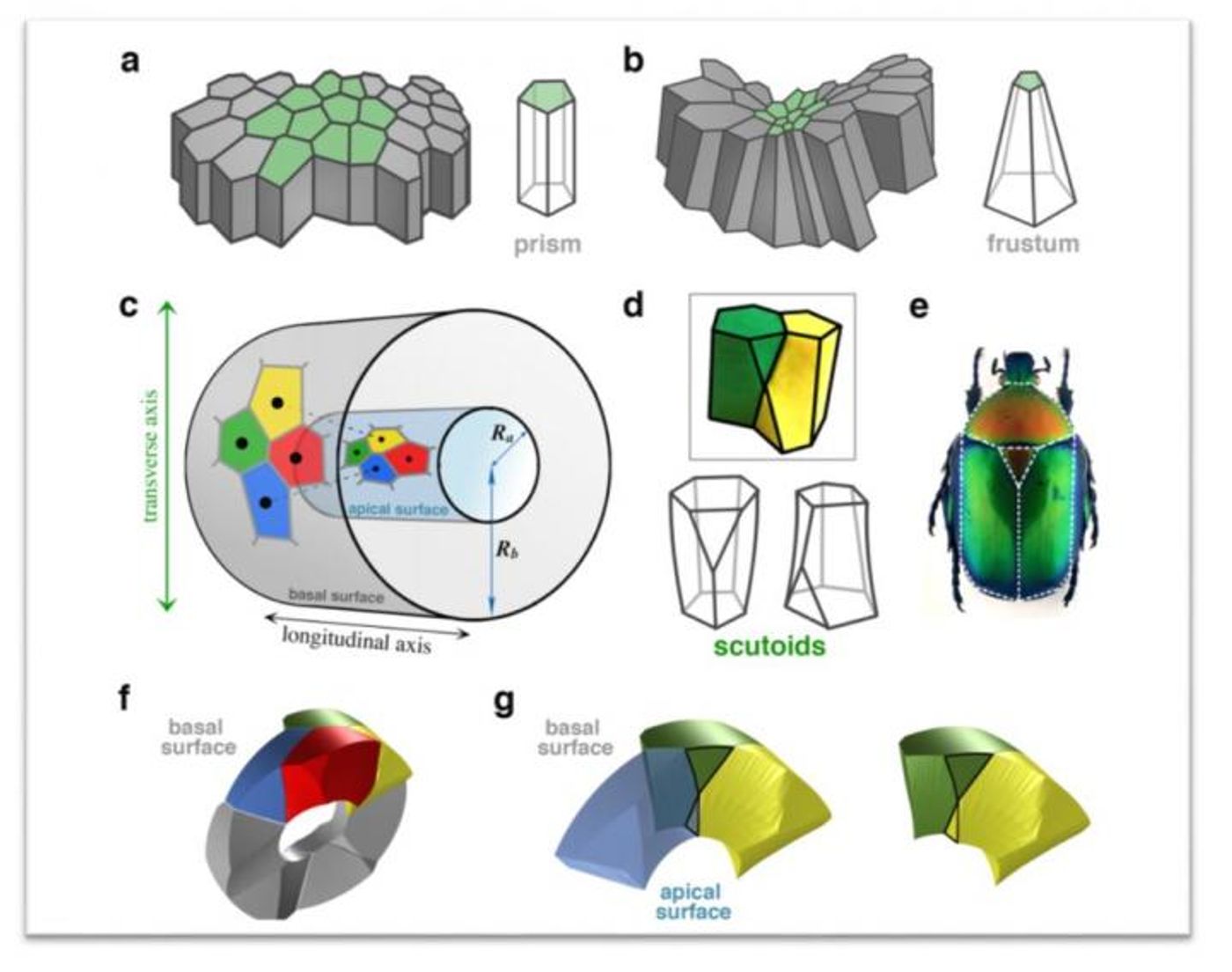A Brand New Geometric Shape
Organisms start from one cell, which divides, again and again, building 3D tissues into a body. Epithelial cells form linings, like the skin and outer layers of organs, and lay the foundation for development, as cells pack together to create the body. Those shapes have to be able to curve, so cells have to be able to flex into a column or a bottle. When scientists took a deeper look into those structures with computational modeling, they found a new one. This new geometric form was then identified in an organism. It has been called scutoid and was reported in Nature Communications.
The research team, which was an international collaboration between Seville University in Spain and Lehigh University, utilized a tool called Voronoi diagramming, which is used to analyze geometrical organization. The scutoid shape allows cells to make the most of their position, maximizing stability while minimizing energy use. Still, the researchers were surprised to see it at first.
"During the modeling process, the results we saw were weird," said Buceta. "Our model predicted that as the curvature of the tissue increases, columns and bottle-shapes were not the only shapes that cells may [be] developed. To our surprise, the additional shape didn't even have a name in math! One does not normally have the opportunity to name a new shape."
The name scutoid was chosen because the shape is similar to a scutellum, which is the posterior section of an insect’s thorax or midsection.
The scientists had to confirm their computational predictions. They assessed cell packing in three dimensions in a variety of tissues, and in different animals. Their study indicated that epithelial cells do indeed adopt motifs and shapes that resemble the ones predicted by the computer model.
Biophysics showed that cellular structures are stabilized by the scutoid shape and that they do indeed make the best use of energy. "We have unlocked nature's solution to achieving efficient epithelial bending,” explained Buceta. These findings could help advance tissue engineering by giving scientists insight into the ideal three-dimensional properties of epithelial structures.
"For example, if you are looking to grow artificial organs, this discovery could help you build a scaffold to encourage this kind of cell packing, accurately mimicking nature's way to efficiently develop tissues,” concluded Buceta.
a) Scheme: planar columnar/cubic monolayer epithelia. b) Scheme: fold in a columnar/cubic monolayer epithelium. c) Math model for epithelial tube. d) Clay model: scutoids in transition, scutoids solids. Scutoids have at least a vertex in a different plane to the two bases and present curved surfaces. e) Protaetia speciose beetle of the Cetoniidae family; white lines highlight scutoid resemblance. - Dr. Nicolas Gompel, with permission. f) 3D cell model, 4-cell motif with apico-basal cell intercalation. g) Detail CREDIT / Luis M. Escudero Seville University, Javier Buceta Lehigh University, Pedro Gomez-Galvez, Pablo Vicente-Munuera, Andalucian Center of Developmental Biology, Severo Ocha Center of Molecular Biology
Sources: AAAS/Eurekalert! Via Lehigh University, Nature Communications









